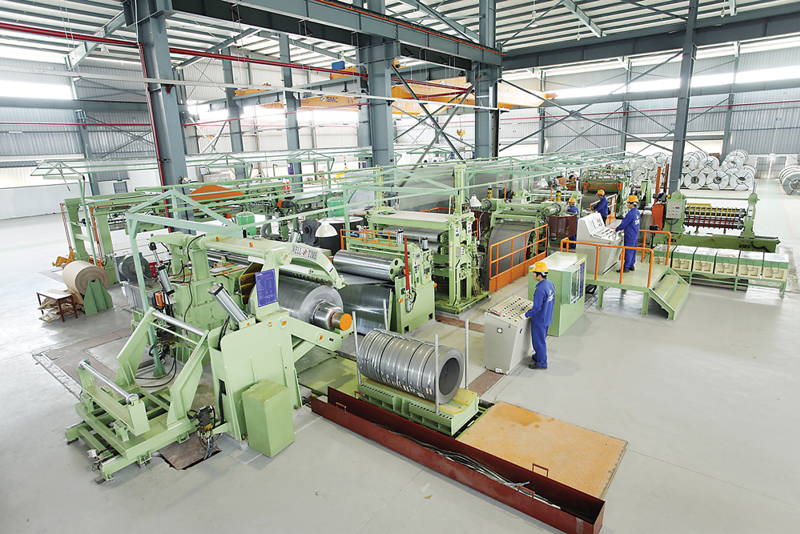With the Lunar New Year, or Tet, now behind us, businesses in key economic zones have sufficient workers to ensure production continues to run smoothly and avoid any disruptions to supply chains. That said, experts still anticipate some degree of shift in Vietnam’s labor market post-Tet. This may result in short-term worker shortages in certain areas, alongside a surge in hiring demand over the course of the first quarter, particularly in the manufacturing and service sectors.
Return to work
Deputy Minister of Labor, Invalids, and Social Affairs Nguyen Van Hoi explained that there is typically a temporary lack of workers following the Tet holiday, due to people taking extended leave, changing employers, or relocating, leading to localized labor shortages in certain factories and regions.
Anticipating these challenges, the Ministry of Labor, Invalids, and Social Affairs (MoLISA) has provided guidance to local authorities, urging them to closely track labor trends in their area. Following directives from the government and the Prime Minister, the ministry instructed localities to implement coordinated solutions to ensure market stability.
Firstly, localities have been successfully carrying out the labor market development plan outlined in Decision No. 176/QD-TTg dated February 5, 2021, on promulgating the Labor Market Development Support Program by 2030. This initiative strengthens market information, enhances supply-demand connections, and plays a crucial role in stabilizing the labor market both before, during, and after the Tet break.
Secondly, MoLISA has emphasized the importance of enforcing wage and bonus policies for workers, especially at industrial parks and export processing zones.
Thirdly, the ministry has been actively guiding and encouraging businesses to provide efficient transport for workers. “Many companies organized buses to ferry workers to and from major cities, ensuring smooth travel before and after Tet,” Deputy Minister Hoi said. “This is a commendable initiative. Companies are also offering lucky money and bonuses to workers when they return to their jobs.”
Trade unions have also organized transport for workers, helping businesses stabilize the labor market. “At industrial parks and export processing zones in Hanoi, Bac Giang, Bac Ninh, Thai Nguyen, Ho Chi Minh City, Long An, Dong Nai, Binh Duong, and elsewhere, people have returned to their workplaces post-Tet,” he noted. “Many areas have seen return rates of 97-98 per cent, with some even reaching 100 per cent.”
According to the Hanoi Federation of Labor, most companies resumed production on the first day after Tet and people returned to their workplaces. Mr. Pham Quang Thanh, Chairman of the Federation, reported that nearly 92 per cent of businesses and around 96 per cent of workers returned to their jobs as planned on the first day of the Year of the Snake.
In Bac Ninh, the provincial Trade Union of Industrial Parks reported that nearly all workers had returned to work, with only a few businesses seeing a 95-99 per cent return rate. The remaining absences were attributed to companies that continued operations through Tet, allowing their workers to take leave during the initial days of the new year.
Lookout for talent
Numerous programs focused on employment exchanges were launched in several localities after the holiday, to strengthen online links between local areas and the labor market. These initiatives serve as essential strategies to ensure market synchronization, contributing to stability and sustainability.
The Ho Chi Minh City Center for Human Resources Forecasting and Labor Market Information has reported that the labor market is showing promising signs after Tet. Issues like job reductions and layoffs have improved, the number of people employed has risen, and recruitment demand across most sectors is on an uptrend. High demand is seen in positions such as administration, mechanical engineering, automation, transportation, warehousing, port services, accounting, auditing, and marketing.
Compared to previous years, the labor market in the lead-up to and following Tet this year has been far more dynamic, with significant recruitment needs, especially in manufacturing, food processing, textiles, footwear, and transportation. Forecasts indicate that Ho Chi Minh City’s workforce can meet business needs, ensuring a stable labor market post-Tet.
Ms. Nguyen Hoang Hieu, Director of the Center, emphasized that the city will focus on leveraging digital technologies and population data to enhance the management and efficiency of labor market operations. This approach will help improve connections between job seekers and employers, making it easier for companies to find the right employees while providing workers with stable, suitable opportunities.
In Hanoi, Mr. Vu Quang Thanh, Deputy Director of the Hanoi Employment Service Center, said businesses in the capital are expected to prioritize recruitment in sectors like information technology, renewable energy, green economy, and digital transformation this year.
Industries such as manufacturing and logistics will focus on positions like automation engineers, supply chain managers, and quality control specialists, to meet the growing demand for process optimization and the implementation of new technologies. The renewable energy and green economy sectors are also expected to experience significant growth.
E-commerce and customer service industries will also continue to actively recruit, with positions in digital marketing, customer experience management, and customer service specialists being in high demand to keep pace with the digitalization trend and rising consumer demand.
To further support businesses in connecting with the right talent, Hanoi will organize 255 employment exchange sessions this year, with 53 planned for the first quarter alone. The target for 2025 is to create 169,000 new jobs, maintaining an urban unemployment rate of under 3 per cent.
MoLISA also anticipates that the labor market will recover in 2025. However, challenges related to labor and employment remain tied to social security. To address this, the ministry has proposed a number of comprehensive solutions to develop the labor market and link supply and demand.
These solutions include refining the labor market information system, enhancing the labor-employment database, and effectively connecting supply and demand, while also promoting job creation in both the public and private sectors. The ministry also plans to improve its ability to forecast labor demand and training needs in various sectors, helping businesses address quality, quantity, and skills gaps.
Through these measures, MoLISA aims to boost employment rates, reduce unemployment, and ensure social security for workers around Vietnam.
According to the Ministry of Labor, Invalids, and Social Affairs, localities and businesses successfully implemented wage policies during the Lunar New Year 2025. The average monthly wage for workers in 2024 stood at VND9 million ($360), an increase against 2023. The average Tet bonus was VND7.72 million ($309) per person, marking a 13 per cent increase compared to a year earlier. Companies and businesses have also introduced diverse strategies to retain workers, including covering transport costs for employees to return home for Tet. They also effectively implemented bonus policies, including providing a 13th-month salary.









 Google translate
Google translate